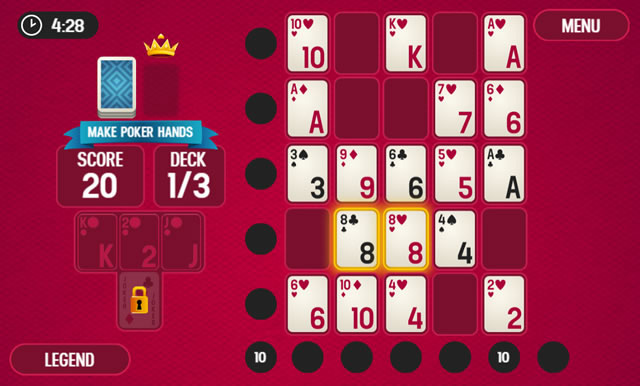


These empty slots are designed to move the cards around to effectively create the foundations. There will be 4 pretend empty space right above the 7 piles of cards when playing solitaire.You can then pick cards and introduce them to the game from the stock. The 24 remaining cards after the dealing to the seven piles will be put in a separate deck face down.Essentially, the number of cards in each starting pile decreases from right to left. The dealing will go on like this until the 7 piles are created, and the last pile has only a single card dealt out face up.The third round starts with one card dealt face-up on the 3rd column, followed by 4 cards dealt out face down.The second round of dealing comprises one face-up card followed by 5 face-down cards.

The first round of dealing must ensure the left-most and first card is laid on the surface face up, while the next six will be face-down cards.The rules of most solitaire games dictate that seven piles of cards must be dealt to the tableau as follows: This is perhaps the most challenging yet most important page of a solitaire game.
Las vegas solitaire rules how to#
The first thing when learning solitaire is how to set up the game. This is the sequence in which you must pile the cards when creating foundations in Solitaire. The rules of Solitaire specify that cards in the game must be ranked as follows: A (low), 2, 3, 4, 5, 6, 7, 8, 9, 10, J, Q, K (high). With that, here are the standard, traditional, or universal rules of Solitaire: Ranking of Solitaire Card Rules If you can create all four foundations while adhering to all appropriate solitaire rules, you will become the winner of the game. The cards in each foundation must run from an Ace to the King in that ascending order. The ultimate objective of the Solitaire is to move all cards from the starting stacks to form complete foundation piles. As such, the rules of Solitaire often vary from game to game. It is important to mention that Solitaire comes in various variations with varying rules.


 0 kommentar(er)
0 kommentar(er)
